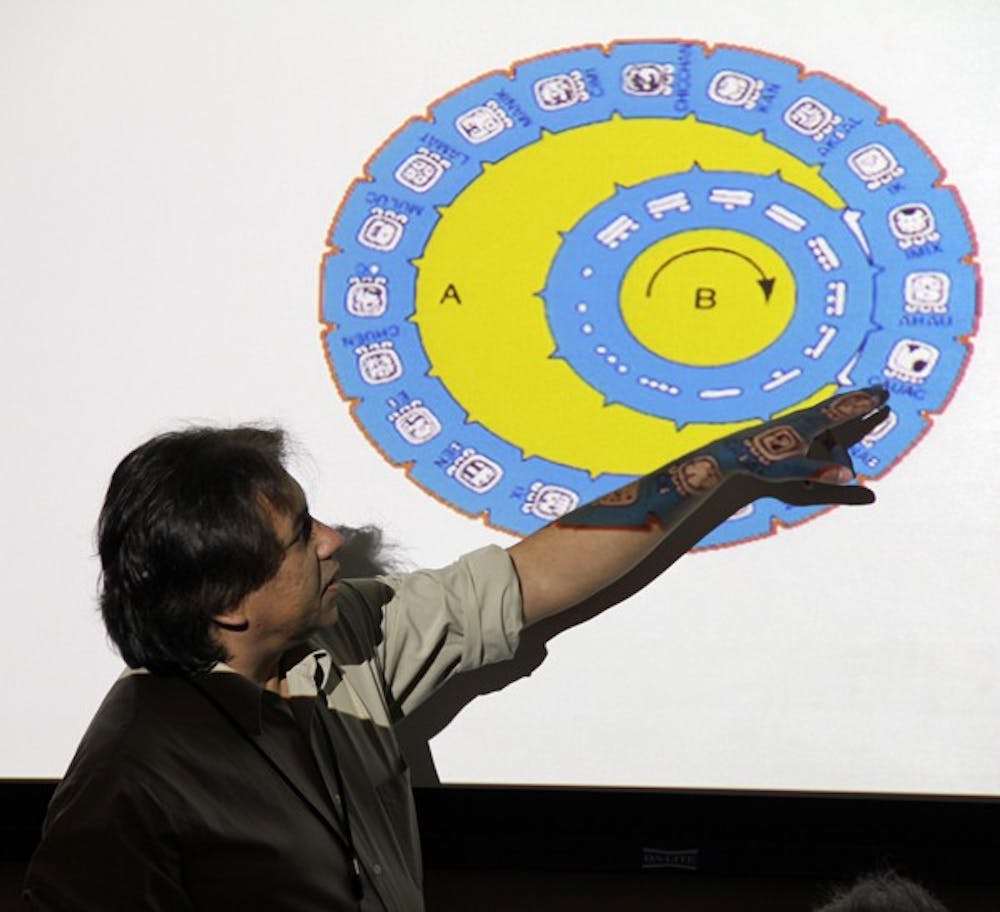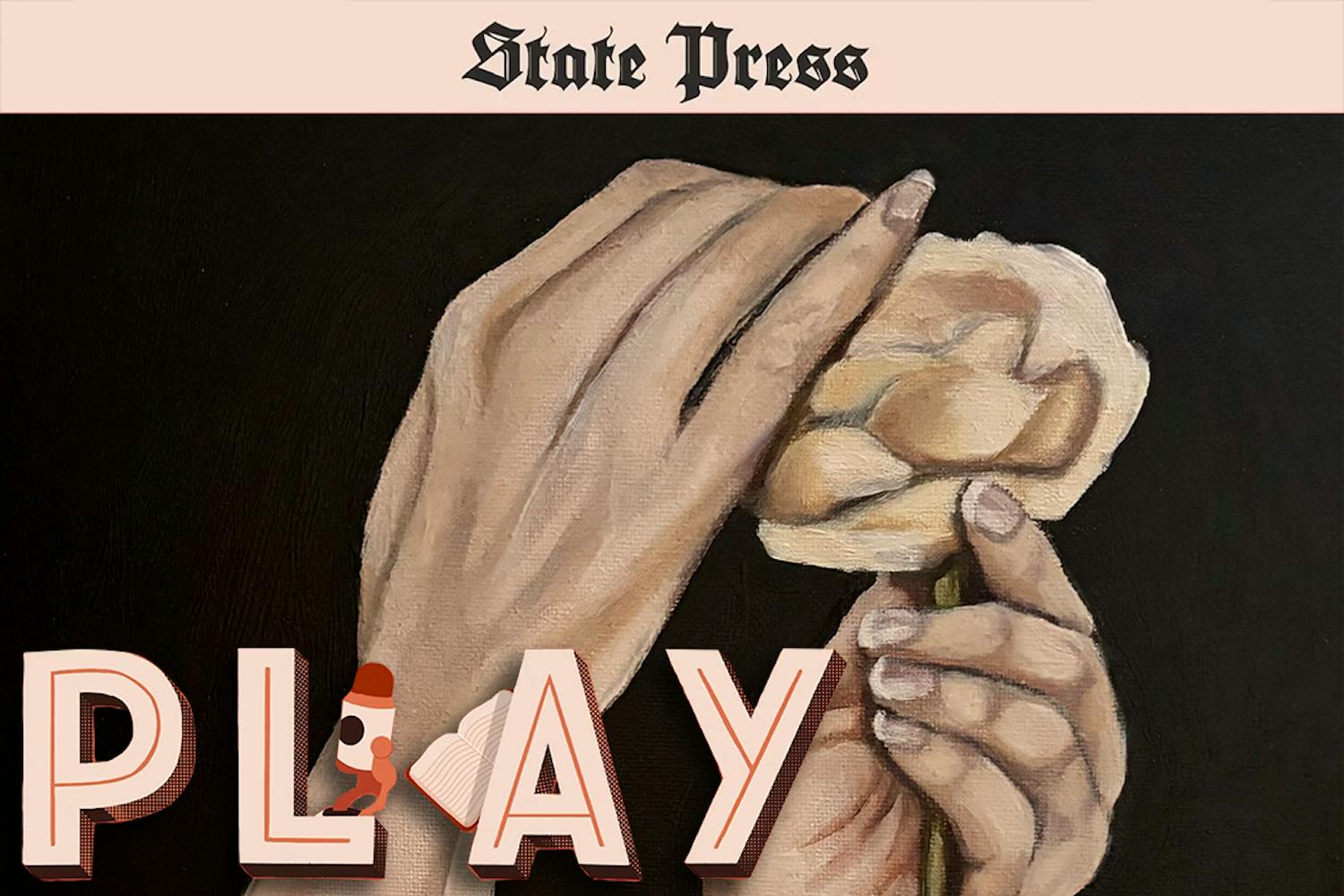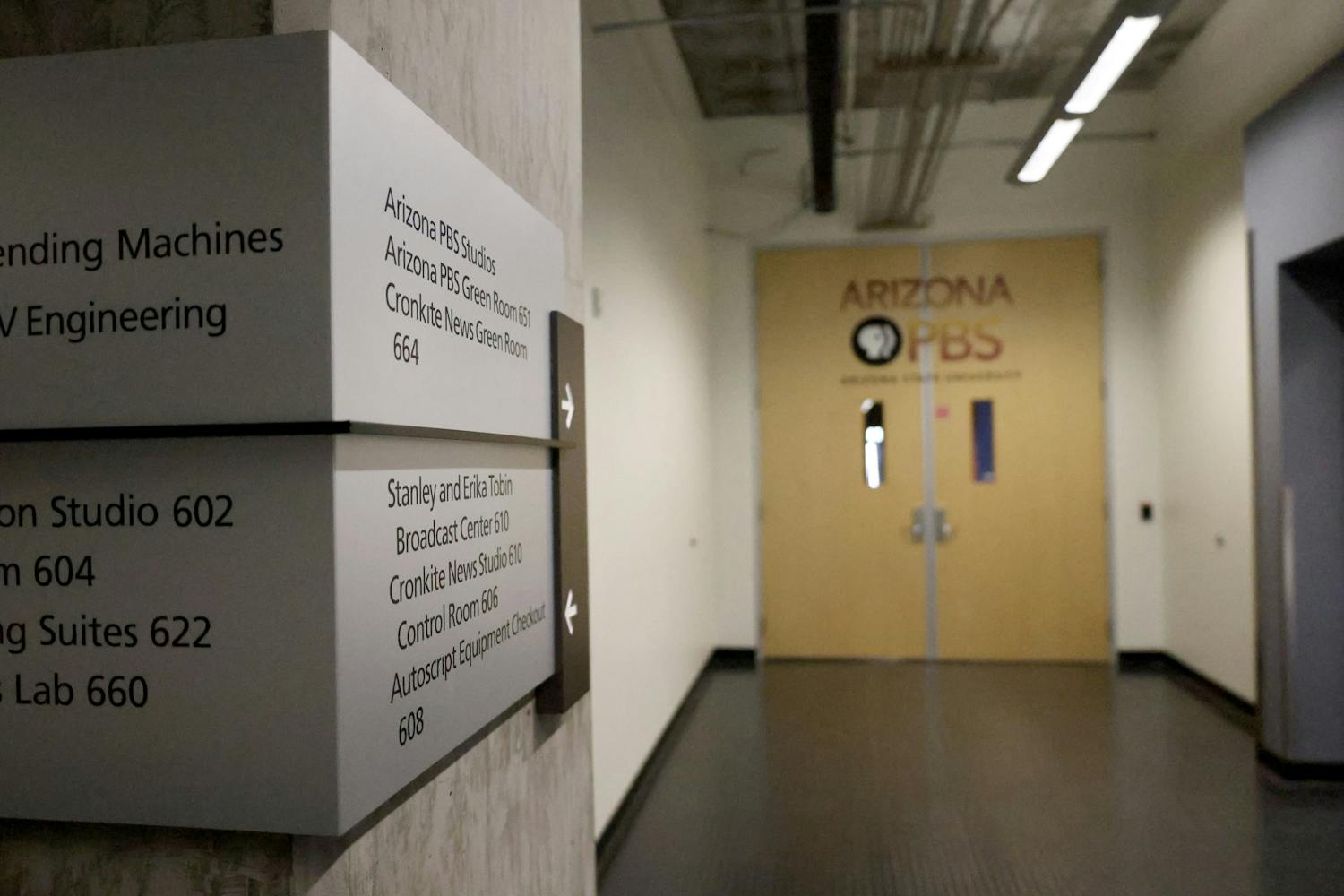 Professor Miguel Aguilera speaks to a small group about the Mayan calendarand the December 2012 doomsday theory at the Memorial Union on Tuesday. (Photo by Diana Lustig)
Professor Miguel Aguilera speaks to a small group about the Mayan calendarand the December 2012 doomsday theory at the Memorial Union on Tuesday. (Photo by Diana Lustig)An interfaith panel explored doomsday theories and explained different faiths' postures about the end of times at the Memorial Union on Tuesday.
“2012: Is this the end?” focused on the presentation of the Mayan culture and calendar by associate professor of religious studies Miguel Aguilera. The panel also included experts on Islam, Christianity and Judaism.
The Mayan Long Count ends on Dec. 21, 2012, but the predictions for 2012 are not from the Mayan culture, Aguilera said.
“The Long Count was not thought to end, because Maya conception of time is infinite with no beginning and no end,” Aguilera said. “Maya people stopped using the Long Count between 900 and 1000 A.D.”
The Long Count was used only to record elite marriages and births. Contemporary Mayan people don’t give it any other significance, said Aguilera.
“When a person from a Western culture envisions a cycle, they tend to think in terms of a clock, with a revolving hand starting and ending,” he said.
Other religious experts gave input on what their faith views as the end of time.
Rabbi Barton Lee, director of the Hillel Jewish Student Center at ASU, said there are many co-existing images of the end of time in the Hebrew Bible, but none that point to a specific date.
“I am relatively certain it won’t take place in 2012 and maybe never,” he said. “The Hebrew Bible has a number of ideas on end of times and immortality.”
ASU Wesley Foundation’s Pastor Rob Rynders said even though Revelations, the last book of the New Testament, is accepted as the description of the end of times, he believes it is a piece of persecution full of symbolism.
“There is quite a bit of money to be made with these doomsday theories,” Rynders said. “I’ve always been very skeptical of these Christian theories of the end of time.”
Imam Ahmed Shqeirat of the Islamic Center said it is more important for people to focus on their actions now, rather than wait for a collective end.
“For sure we believe that it is not 2012,” he said. “(God) told us about many of the major and minor signs that will tell us when the end is near.”
Michael Hofeling of the Latter Day Saints Institute said the end of times will come along with the second Messiah.
“Jesus invites us to watch and be ready, to seek and recognize the signs,” Hofeling said. “Fifty-two signs must be fulfilled before the second coming.”
Eric Breault, who will begin as a religious studies graduate student next fall, was in attendance and said he was very interested to watch the interfaith dialogue.
“I thought it was wonderful, especially the Mayan part,” he said. “I think it shed a light on how westerners are looking at this culture.”
The event was organized by Patrick Thompson, the vice president of the Council of Religious Advisors at ASU, wanted to bring religious leaders with different faith perspectives to speak about the end of time.
“I think it’s an educational thing to hear from other people that don’t necessarily think the same thing as you do,” Thompson said.
Reach the reporter at dpbaltaz@asu.edu
Click here to subscribe to the daily State Press newsletter.




